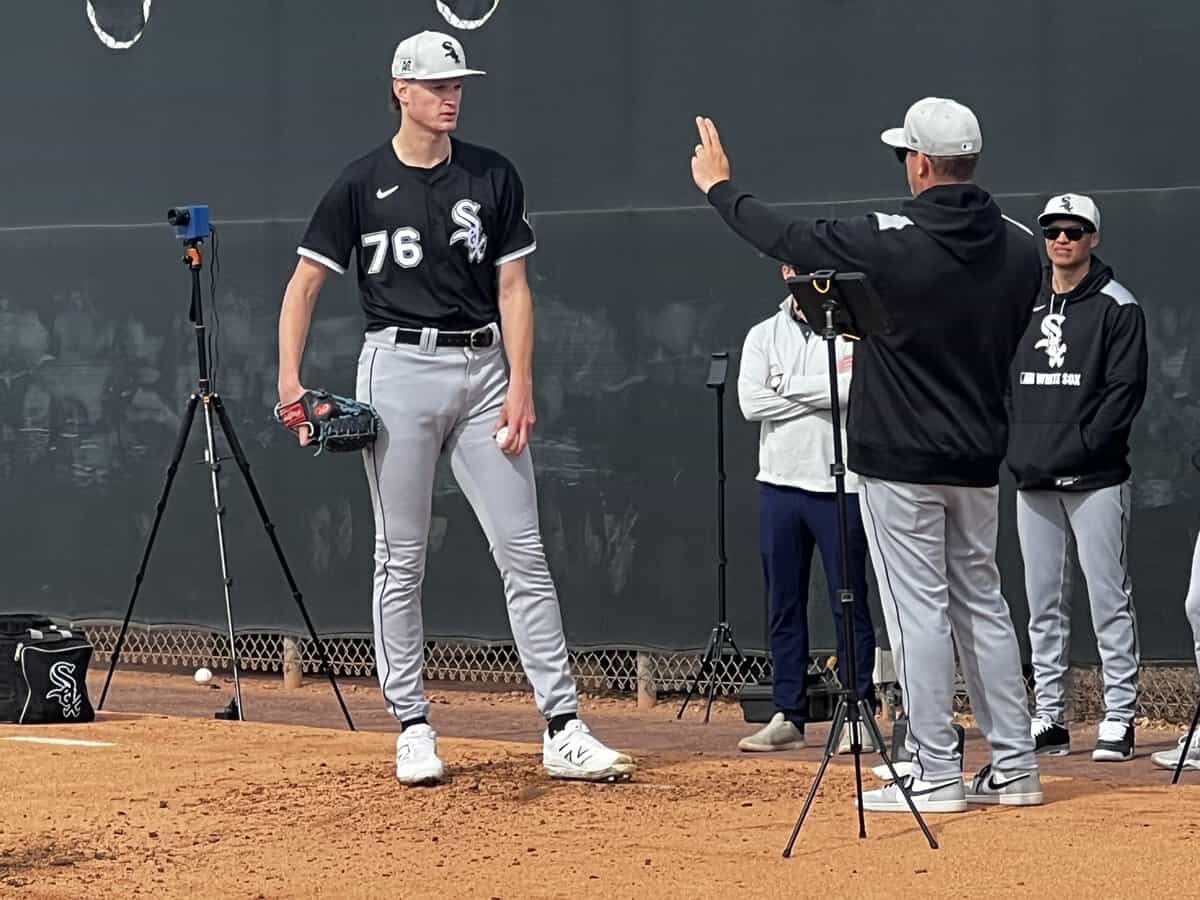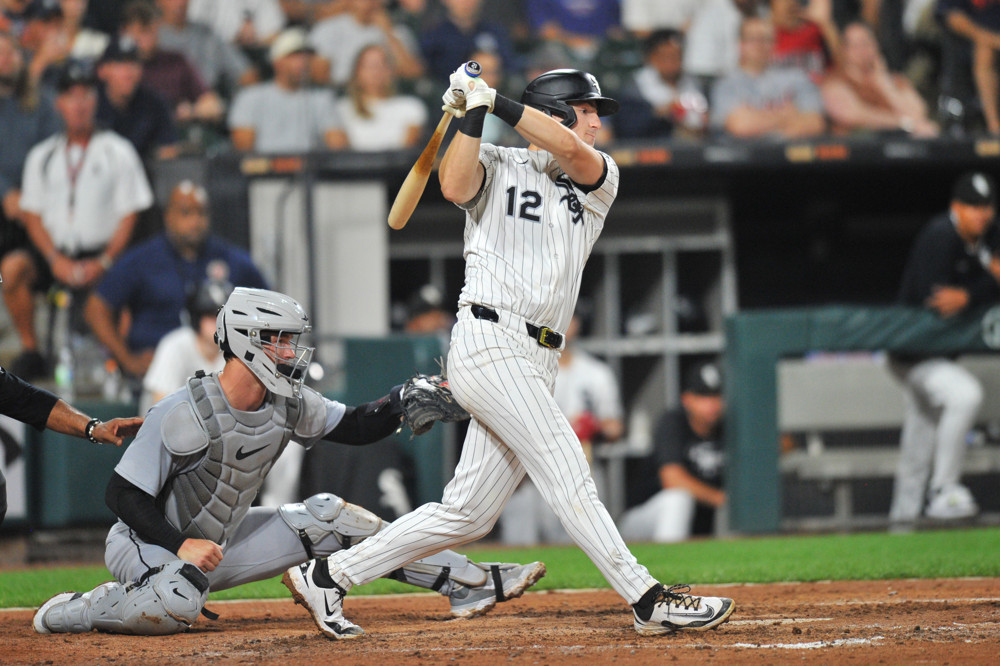Brian Bannister brought this up earlier in the year when Martín Pérez first went down with an injury, but it's true again as a shoulder strain has ended the left-hander's season: There are a lot of pitchers across Major League Baseball drawing higher annual salaries than the entire White Sox pitching staff.
Without Pérez, it's just Tyler Alexander on a league-minimum $760,000 contract and a bunch of guys making the same amount on pre-arb deals. This isn't exactly the preferred rallying cry for the fan base, but it's hard to miss the note of pride from the White Sox senior advisor to pitching that the team has cobbled together non-terrible run prevention (20th in runs allowed per game, even if Bannister tends to speak in terms of WAR) on a shoestring budget.
"Being able to find pitching, do with some names what other teams are not able to do, which is why they get rid of them, and come in and really figure out their arsenals and collaborate with those pitchers and turn them into quality major league starters, I think is gonna be our foundation, and then we'll keep layering on top of that," Bannister said.
Bannister's pride is rooted not merely in piecing together a staff where the biggest addition was the decidedly yeoman Pérez, but more strongly that it came by repurposing cast-offs like Shane Smith, Mike Vasil and Yoendrys Gómez, and that the White Sox front office was freed up to trade away the best thing about the 2024 pitching staff in Garrett Crochet for the purpose of boosting an offense that desperately needed it, without inviting 2024 levels of disaster.
Maybe Ryan Fuller is just 10 more Colson Montgomery home runs from saying something similar from his perspective, but while Bannister imagines bigger swings at higher-ceiling arms being part of White Sox contention efforts, he sees finding pitching depth from unexpected sources to be a long-term hallmark for the organization.
"Studying the league and my experience has been, you start with a strong position player core," Bannister said. "A young core that has upside, that has the chance to play together for a long time. You get creative with building the pitching cost-effectively around that core and you can allocate more resources to the hitting side -- as long as the pitching isn't holding things back.
"Then as you get closer to that World Series window, whether it comes via free agency or trade, you go out and get that really high-upside pitching that can take you to the finish line. That's a formula that I've seen work really well, whether you're a small-market team or big-market team, low payroll or high payroll."
⚙️⚙️⚙️
After raving of the benefits of installing Hawk-Eye tracking systems at Charlotte and Birmingham, Bannister is excited that it was successfully installed at Winston-Salem by season's end. Beyond providing intensive data going forward, setting the system up allows the Sox access to Hawk-Eye data for all Winston-Salem's road games this season as well, which is necessary in an era where Bannister says so much of making pitching adjustments feel like "wars fought under the microscope."
Arming up for such a war, the White Sox are shipping their KiniTrax lab from the hallway outside the home clubhouse to the complex in Arizona, which will make it available for Hagen Smith in the Fall League. Given how much of Smith's season has been devoted to figuring out his mechanics, this seems more than necessary, but 10 strikeouts in five no-hit innings on Thursday inspires a different tune from Sox leadership.
"He really is a stuff guy, and when the stuff's there, the walks are also lower," said Bannister, formally inviting us to analyze Smith from afar in a pretty straightforward manner. "Carlos Rodón, when I had him in San Francisco, we were able to get a slower breaking ball involved that really helped count leverage and pitch efficiency. With [Smith], we've been trying to figure out, what are your optimal positions? Who are you? How can we help maintain you from behind the scenes? The next layer is building in that kind of pitch efficiency that gets him deeper into games. Because if he is that high of a strikeout-rate guy, pitch counts and getting deeper are going to be more of a challenge."
Bannister emphasizes that there were a lot of exploratory stages of Smith's season; dalliances with different mid-week routines, different delivery cues. The No. 5 overall pick experiencing a midseason velocity dip in Double-A while several of his fellow 2024 first-rounders were cracking the majors felt like a specific nadir, but Bannister terms it as just one of many trials that ended in error.
Talking about this process is important, because when Bannister stands out and mimes out the delivery cue that sparked Smith's recent spikes of 99 mph and devastating effectiveness -- lifting his front leg up and keeping it neutral under his body a la Justin Verlander or Zack Wheeler, rather than coiling it inward where it had been leading Smith's upper half to tilt forward -- it can seem frustratingly simple. But that just drives home Bannister's point: The adjustments are minute, and they need to be well-versed in the pitching equivalent of microscopes to find them.
⚙️⚙️⚙️
Bannister has often expressed striking optimism about Jonathan Cannon, even throwing out some Logan Webb comparisons, albeit ones that seemed more about defining his pitching style than guaranteeing Cy Young votes down the road. So it's unsurprising to see him refer to the right-hander as "that major league starter that we know he is."
But with both Cannon and Sean Burke, the latter of whom he thinks has focused on his sinker and changeup to the detriment of his talent for supinating his wrist and spinning the baseball (Burke agrees), Bannister said the White Sox are weighing the costs of some adjustments the young starters have made under their tutelage.
Among the many adjustments to Cannon's pitch arsenal in spring of 2024 as he switched to building his game around seam effects, he switched to a one-seam sinker grip. It's less common than a two-seamer, and Bannister notes that the primary examples of pitchers who have thrived with it -- Sonny Gray, Marcus Stroman -- have lower spin efficiency on their fastballs, and better breaking ball options than Cannon.
More to the point, now that the surface-level results have taken a turn for the worse, it's worth revisiting if Cannon has ever seen the returns that justify the switch. Cannon has a 17.5 percent career strikeout rate, a well below-average figure that has always been a truth about his game, but also a 38.1 percent ground ball rate when he used to live above 50 percent in the minors. It's usually not palatable to be deficient in both areas.
"He was getting more vertical depth, but it wasn't translating to more ground balls," Bannister said. "From an R&D puzzle perspective, if he's not going to be a high K-percentage pitcher than we need to balance it out with home run suppression and the ability to handle heavily stacked left-handed lineups like what Detroit can throw at him. It's just problem-solving for that, because he did throw a two-seamer most of his life before spring training."
Like with Smith earlier in the year, this project seems to be distinctly in the brainstorming phase at the moment, even if Cannon is a candidate for one more big league outing this year. Obviously returning to the two-seamer grip is under consideration, as is a gyro slider that Cannon has used in the past as well.
"We're just figuring out that fit formula where he can go out there and over the course of a long season, be successful no matter what teams throw at him and not be vulnerable to platoon issues or just random home runs," Bannister said.
⚙️⚙️⚙️
Normally the approach is to end things on an uplifting note, but how about just a weird one?
Jairo Iriarte finished his season with a 7.22 ERA out of the Charlotte bullpen, albeit a 92 mph exit velocity going for a home run in his last outing of the year at Truist Field is representative of how that ballpark enables a spiral. But this is the second year of the Sox trying to reconcile the gulf between the 2023 scouting video of Iriarte they fell in love with ahead of the Dylan Cease trade, and what they've seen the 23-year-old Venezuelan do in this organization. Except now the results are worse than his 2024 campaign with Birmingham, and he's no longer exceptionally young for the level.
Iriarte returned in June from a Colson Montgomery-style sabbatical to the complex in Arizona, and initially produced better results after work to make his arm stroke both shorter, but also keeping the ball behind his back longer for the sake of deception. He produced a 2.00 ERA and held hitters to a .169/.286/.237 line in his first 15 games back at Triple-A, but hard contact returned with a vengeance as his arm action grew long.
More to the point, Iriarte sat 94 mph with below-average vertical ride on his fastball in his final outing of the season. And the White Sox have not only seen a more running shape to his fastball since Iriarte was acquired, but several hundred RPMs of raw spin have dropped off his pitches since his Padres days as well.
"He's been one of the more interesting development cases I've ever been a part of," Bannister said. "We're really just trying to problem-solve around what it's going to take for him to have that level of performance."





